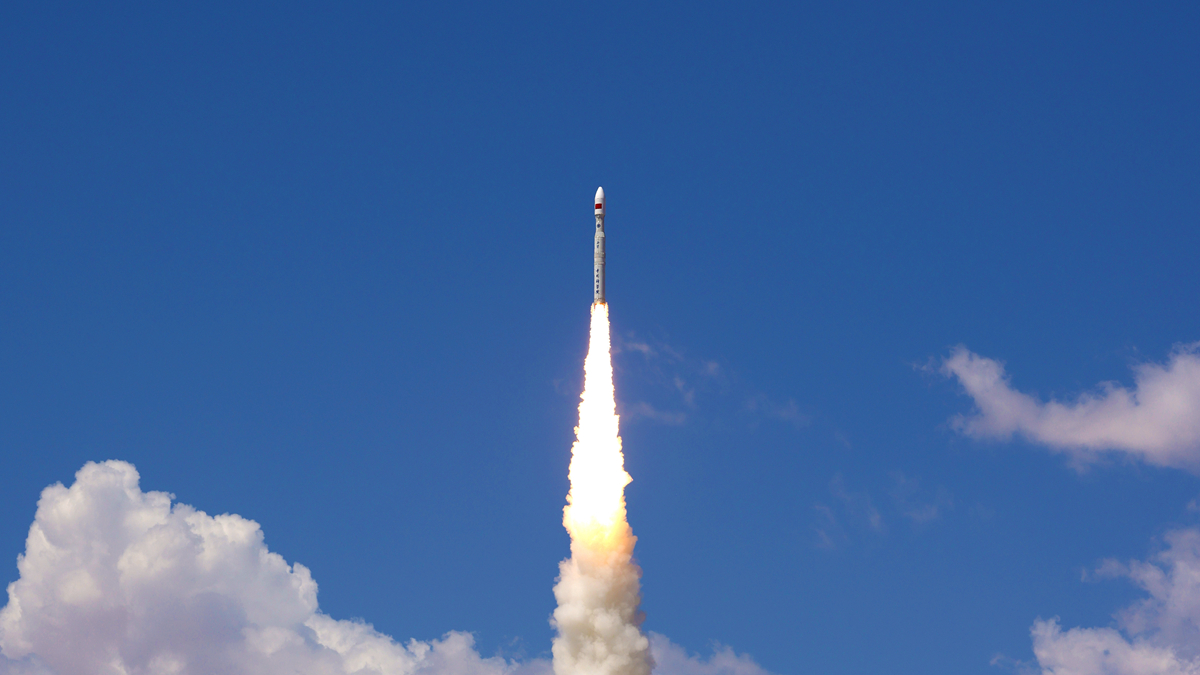
Over the past 10 years, China has seen a huge leap forward in both basic studies and applications of quantum science. /CMG
August 28(CGTN)--China is now the only country in the world, that has achieved major breakthroughs in both photonic and superconducting quantum computing, represented by computer prototypes Jiuzhang and Zuchongzhi No.2 respectively.
Since 2013, the country started to stress the importance of quantum science, saying it will greatly advance the progress of information technology, energy, and material researches so as to bring about a new industrial revolution.
Over the past 10 years, China has witnessed a huge leap forward in both basic studies and applications of quantum science, with a number of major achievements emerging in the field.
Quantum computing and quantum communication are confusing concepts for most of us, sounding like futuristic technologies without any impacts on our daily lives. Yet, powerful computers, communication networks and new tools for processing information have been using quantum technologies for years.

Participants check out a Jiuzhang quantum computer model at 2021 Quantum Industry Conference in Hefei City of east China's Anhui Province, September 18, 2021. /CFP
New studies and innovations
China successfully sent the world's first micro-nano quantum satellite into space inJuly 2022, which started the establishment of an efficient, practical and global quantum communications network. The satellite has completed in-orbit tests and will conduct scientific experiments soon.
Professor Peng Chengzhi at the University of Science and Technology of China, one of the satellite's developers, told China Media Group (CMG) that the satellite can form a quantum communications network by itself and become a part of a future network with other quantum satellites.”
Moving forward, we will connect the satellite with the needs of users to move it from lab to market, so as to promote China's development in quantum science and contribute to information security.

China launches a micro-nano quantum satellite atop a Lijian-1 carrier rocket from the Jiuquan Satellite Launch Center in northwest China, July 27, 2022. /CMG
Huge leap forward
In October 2020, China gathered relevant authorities and experts to study the development of quantum science in and out of the country, hoping to accelerate strategic and systemic planning of the field.
Since then, the country has seen great progress not only in the basic studies of quantum technology, but also in its applications and industrial development, according to Xue Qikun, president of the Southern University of Science and Technology.
Pan Jianwei, known as China's father of quantum, also vice president of the University of Science and Technology of China, told CMG that in the past decade, the number of people devoted to research in the quantum field has steadily grown from dozens to several hundred now.
Encouraged by China's rapid development in quantum science, many researchers have become quite active in conducting exchanges and cooperation, which I think is one of the biggest changes in the field over the past few years.
The Beijing Academy of Quantum Information Sciences, for example, is vigorously pushing forward the practical applications of quantum technologies. There is an avenue lined with companies engaged in the field in Jinan City of east China's Shandong Province. The quantum sector of Hefei City in east China's Anhui Province is also expected to reach 100 billion yuan ($14.57 billion) before 2030.
Ye Yujiang, director for basic research at the Ministry of Science and Technology, told CMG that with continuous and long-term support, China's quantum science has achieved a huge leap forward. We have initially developed the capabilities in systematic innovations in the field.

A schematic diagram of a quantum computer model at a cyberspace science technology museum in Zhengzhou, Henan Province, November 27, 2020. /CFP
Remarkable achievements
In 2016, China successfully launched the world's first satellite for quantum science experiments, nicknamed Micius, and later, realized quantum communications between the satellite and Earth for the first time in history.
In 2017, a 2,000-kilometer quantum communication line was officially put into use, which became the world's first trunk line for secure quantum telecommunications. Known as the Beijing-Shanghai Trunk Line, it connects the country's major secret communication network nodes: Beijing, Jinan, Hefei and Shanghai.
This April, Pan Jianwei, together with his team from the University of Science and Technology of China, set a new world record in realizing quantum states transmission (QST) between two ground stations over 1,200 kilometers apart via a quantum scientific experiment satellite, signalling a giant step toward constructing a global quantum information processing and communication network.
This June, Chinese scientists have also found way to form an ordered and tunable Majorana-zero-mode (MZM) lattice, a milestone step to greatly improve the performance of quantum computation. The research findings were published in the academic journalNature.
Read More:
Uncovering China's deep dive into quantum technology
Nature publishes Chinese scientists' breakthrough in quantum computing
Link:
https://news.cgtn.com/news/2022-08-28/China-in-Past-Decade-Leaps-and-bounds-of-quantum-science-innovations-1cRoYgSlbxu/index.html
